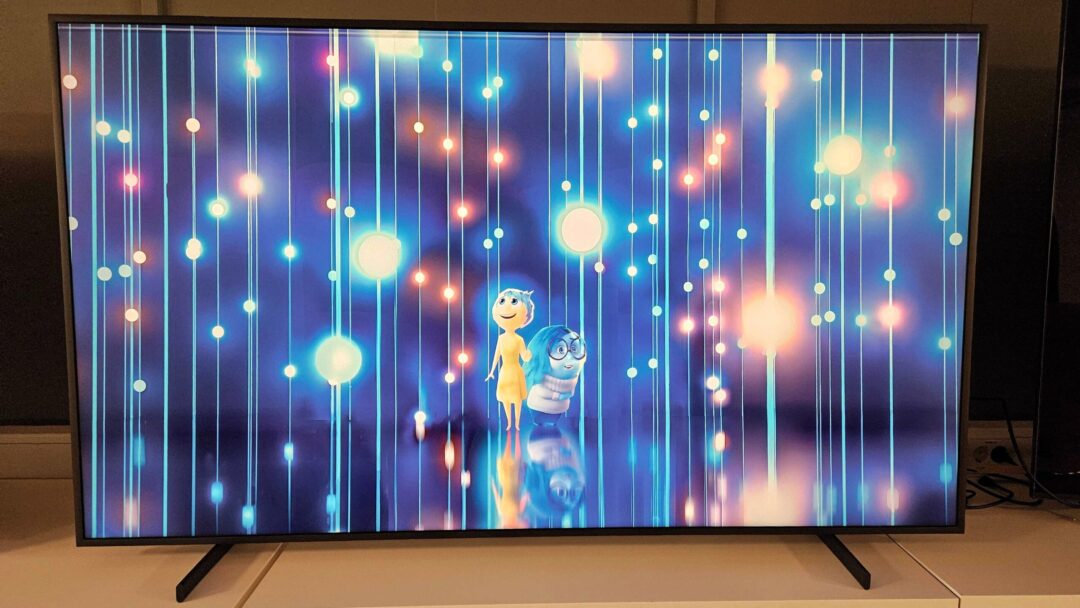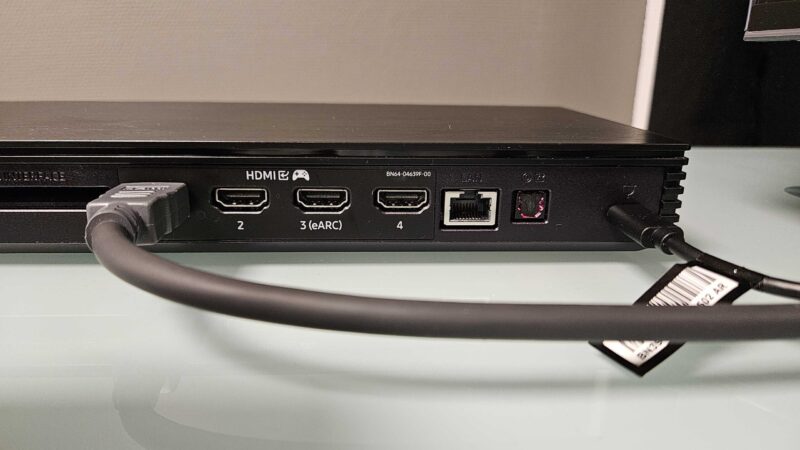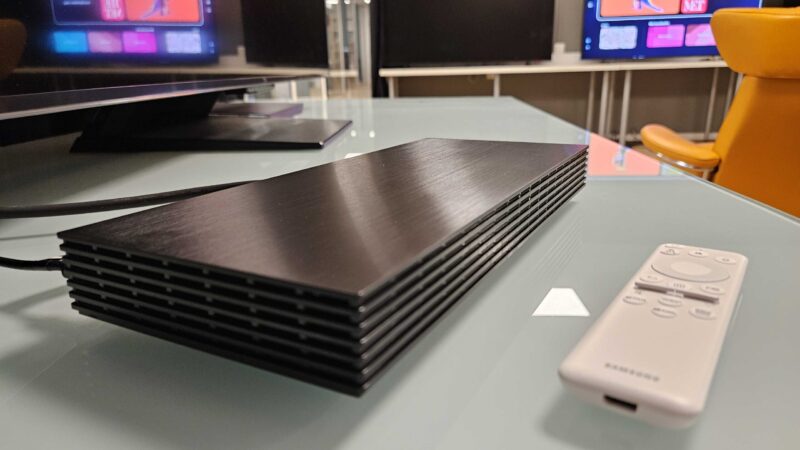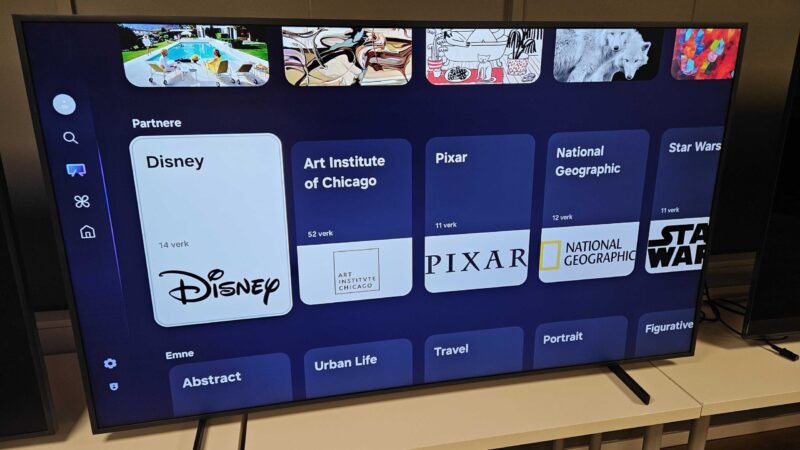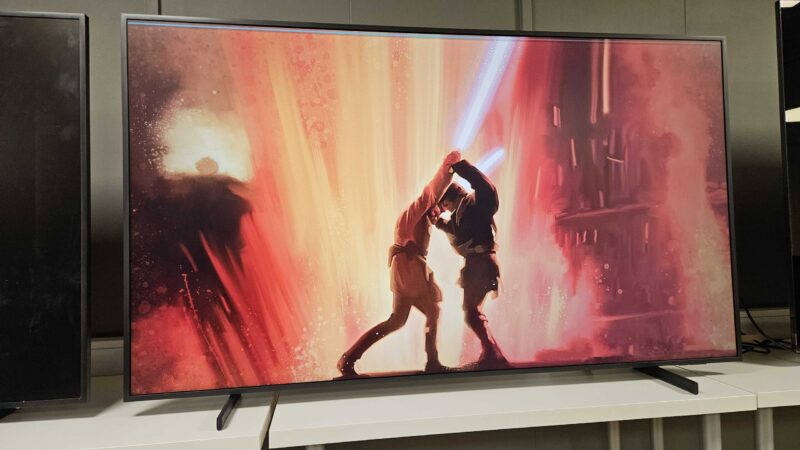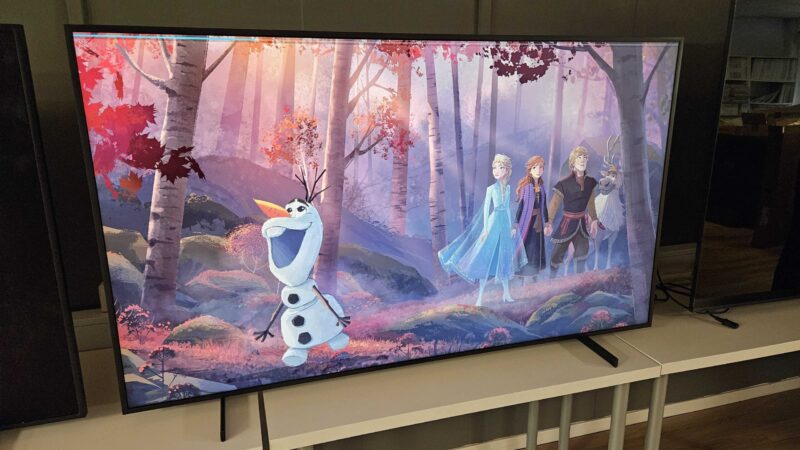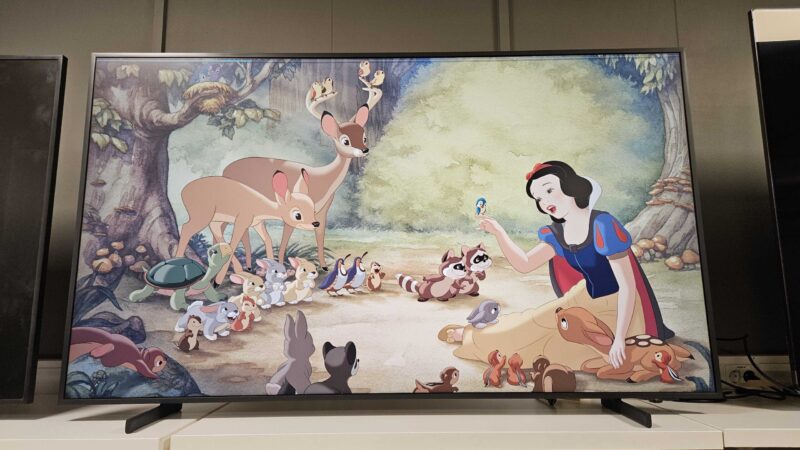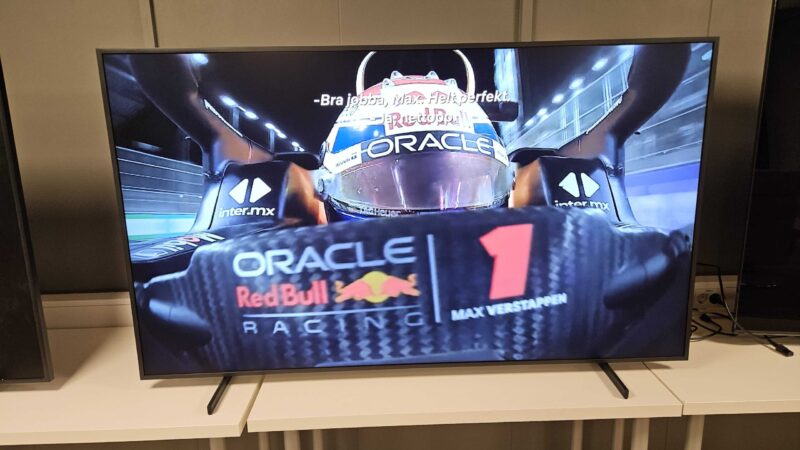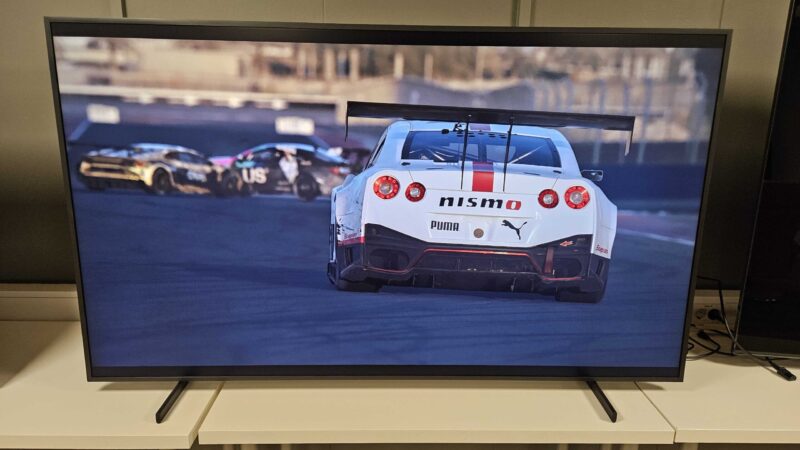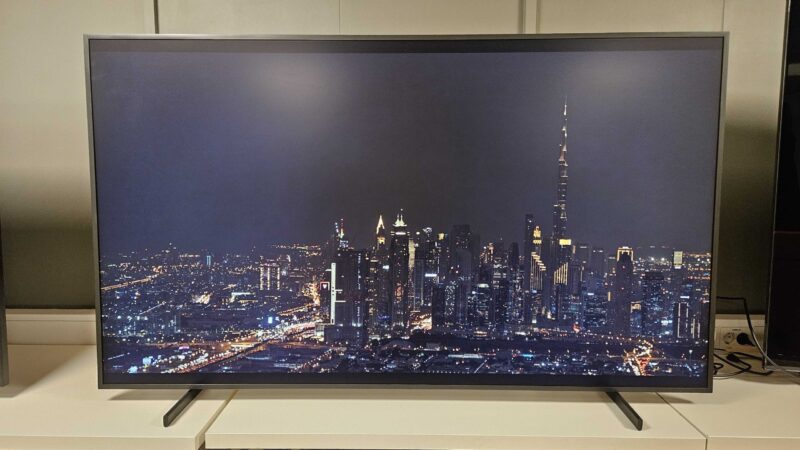Samsung The Frame Pro is a long-awaited TV in our eyes: the design favourite has been one of Samsung’s bestsellers for years, both on the global market and here. Being able to mount a flat and stylish Frame TV on the wall in your newly decorated home is a dream come true for many.
With integrated wall mounts, frames in different colours and the ability to display art and photos in standby mode, it’s no wonder The Frame has become so popular. At the same time, Samsung has been criticised for the picture quality, which has been rather ordinary and bland compared to other displays in its price range.
Many have called for a more potent luxury version that not only looks good on the living room wall, but can also shine when lined up for a film night or a new series. Ergo, the Pro version comes as requested – if it manages to deliver the goods in crystal clear, sparkling 4K HDR…
Testing Samsung The Frame Pro: From apprentice to pro

Our test sample of The Frame Pro is 65 inches, which is expected to be the most popular screen size. It is also available in 75 and 85 inches, but if you want something smaller (e.g. 55 inches), you’ll still have to settle for a “regular” The Frame.
The Frame Pro looks almost identical to the standard version and uses the same type of wall mount, but apparently requires different frames because it has a slightly different light sensor and a control panel on the underside. So you can’t simply move the frames from your old Frame to the Pro version.
The most important new features are on the inside. The key to the Pro model is that it has an upgraded picture panel with MiniLEDs and a special vertical local dimming that promises significantly better contrast and brightness.
In addition, Samsung can tempt you with a new wireless connection box: Wireless One Connect.
The TV itself only needs a power cable, while the video sources are connected to the Wireless One Connect box via HDMI. From here, the signals are transmitted wirelessly to the monitor in 4K quality. Audio signals can also be sent wirelessly to a compatible Samsung soundbar if desired.
Wireless video transmission isn’t new, but it’s still quite rare in a TV context. LG is among the few others to offer this (only the flagship M-series model). And from the Samsung stable, only the 8K flagship QN990F actually comes with the same type of Wireless One Connect Box.
This allows you to place the TV and other devices completely separate from each other, for example on a nearby shelf. This allows you to hang the TV on the wall without having a piece of furniture underneath, which saves space.
The only downside to wireless connectivity is the transfer speed, because although the Frame Pro supports display frequencies up to 144 Hz and has plenty of gaming features, it’s not as fast as the fastest gaming monitors out there. We measured input lag at around 22 milliseconds, which is in the middle of the pack in this class.
Usability and features
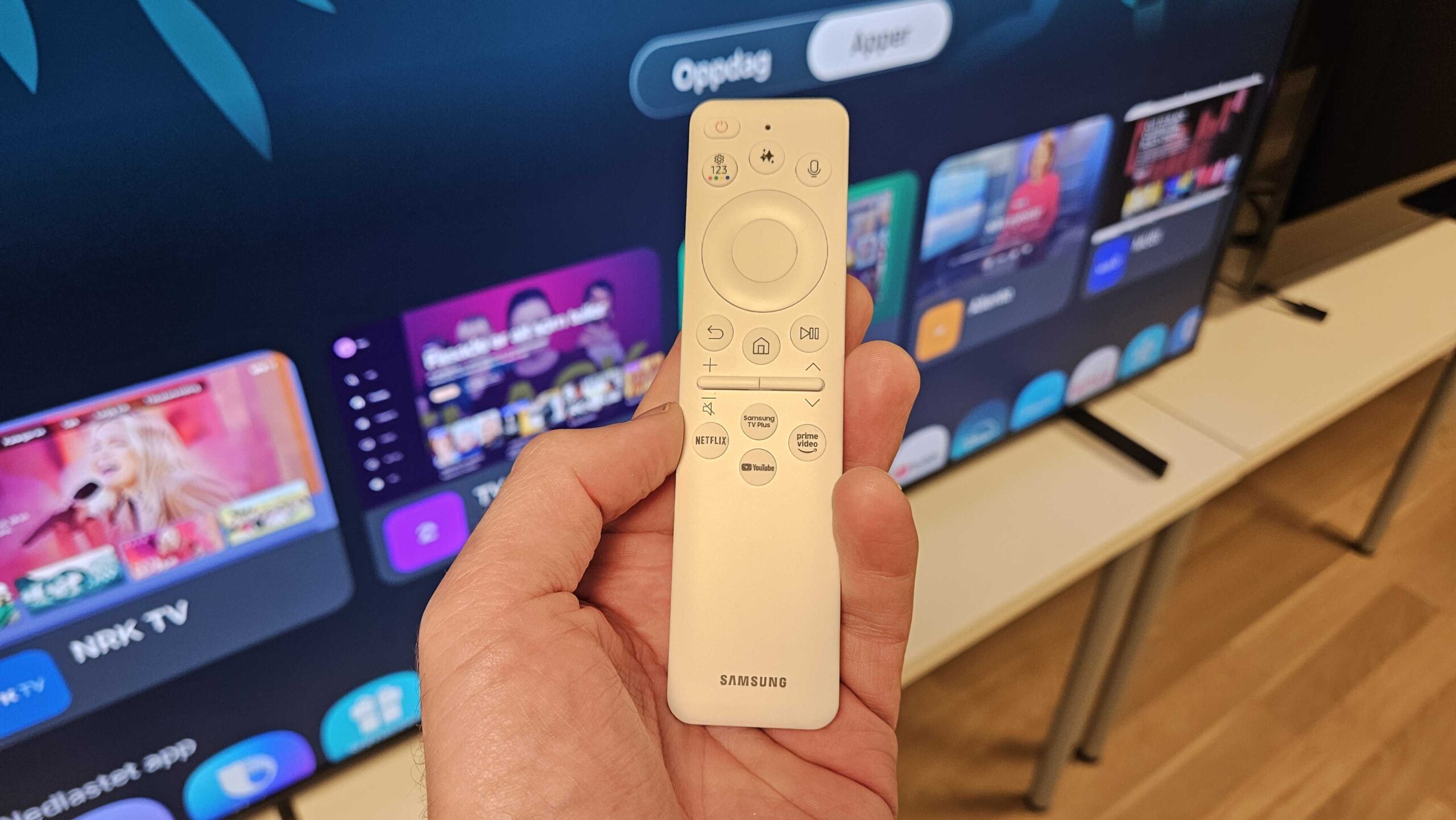
The remote is still white, but now with solar cells and USB charging. In terms of smart features, the Frame Pro also benefits from Samsung’s updated One UI, which is faster and more customisable.
You have more control over how the home screen looks and get recommended content based on your own preferences. You can even go in and adjust the size of the menus so they don’t cover the entire screen. And a separate shortcut button takes you directly to the picture settings if you wish.
The selection of apps is impeccable and services load quickly. Switching back and forth between different types of content sources, including Samsung’s own free TV service TV+, is also fast.
Art Mode – digital art gallery
One of The Frame’s greatest strengths is the Art Mode digital art gallery, which features over 3,000 original paintings and photographs from galleries and museums around the world. The latest addition is new content from the Disney catalogue, including iconic images from Star Wars.
Note: This year other Samsung TV models will also get access to the Art Store, so it’s no longer exclusive to The Frame. And the subscription still costs a pretty penny. But you can also generate your own images using an AI assistant, and that part is completely free.
Picture quality
The big question, of course, is whether Samsung has managed to significantly improve the picture quality. The answer is a resounding yes.
As expected, the first impression is that the Pro model has significantly better contrast as a result of more precise light control. Because the monitor has local dimming zones, it can more easily control, increase and decrease the brightness in different areas at the same time, staying more true to the original image signal.
Compared to a regular The Frame, there is no doubt that the Pro model achieves higher brightness, and that means: approximately 1,000 nits in a 10% window is roughly double the standard, providing significantly more dynamics and pop in HDR lighting effects.
This difference in contrast and image dynamics is also reflected in the colour reproduction, which is noticeably more vibrant and nuanced. Frame Pro also has a neutral colour palette – just what was needed when part of the purpose is to display original images and photographs.
The difference is evident in all types of imagery, from news to sports, but especially in films and series, where there are many dark scenes. Here, the Pro version manages to serve images with more depth and clarity than the standard version of The Frame, which is quite flat by comparison.
When watching popular series like Yellowstone or Last of Us, it’s clear that the action feels a little more vibrant, lifelike and engaging on The Frame Pro.
We’re also impressed with the sharpness. The images are amazingly sharp and noise-free without feeling artificial. This is probably due in no small part to the matte, anti-glare panel and the advanced NQ4 Gen 3 AI video processor.
However, Samsung hasn’t gone all the way, because there’s still some way to go before the best Neo QLED and OLED models. The Frame Pro model uses a simpler form of vertical local dimming, where the LEDs are mounted on the underside of the panel and the light is spread out in vertical blocks.
This solution differs from the high-end Neo QLED models, where there are thousands of dimming zones right behind the LCD panel. It’s tempting to call the Pro solution “local dimming light”, as it doesn’t offer nearly as precise control, which means we can glimpse some small halo effects around bright objects on a dark background.
But it’s better to have SOME local dimming than none at all. Therefore, Frame Pro is a solid step in the right direction for the Frame family. But if you want a bit more performance, it might be worth checking out the Samsung QN900F: It will also have a Frame-like design, but with full-blooded direct-lit local dimming under the hood – albeit at a much higher price.
Sound quality
On the audio side, there hasn’t been much room for change in the Pro compared to the standard Frame. It still has a pretty standard built-in stereo speaker system. It plays relatively clear and clean, but as it has no separate woofers, the soundstage is quite narrow.
If you want proper sound, it’s still recommended to supplement with a separate sound system, such as Samsung’s own smart S-series models. We’ve also heard The Frame Pro work well with a pair of Music Frame “frame speakers”. New this year, these can also be used as stereo rear speakers in a surround setup.
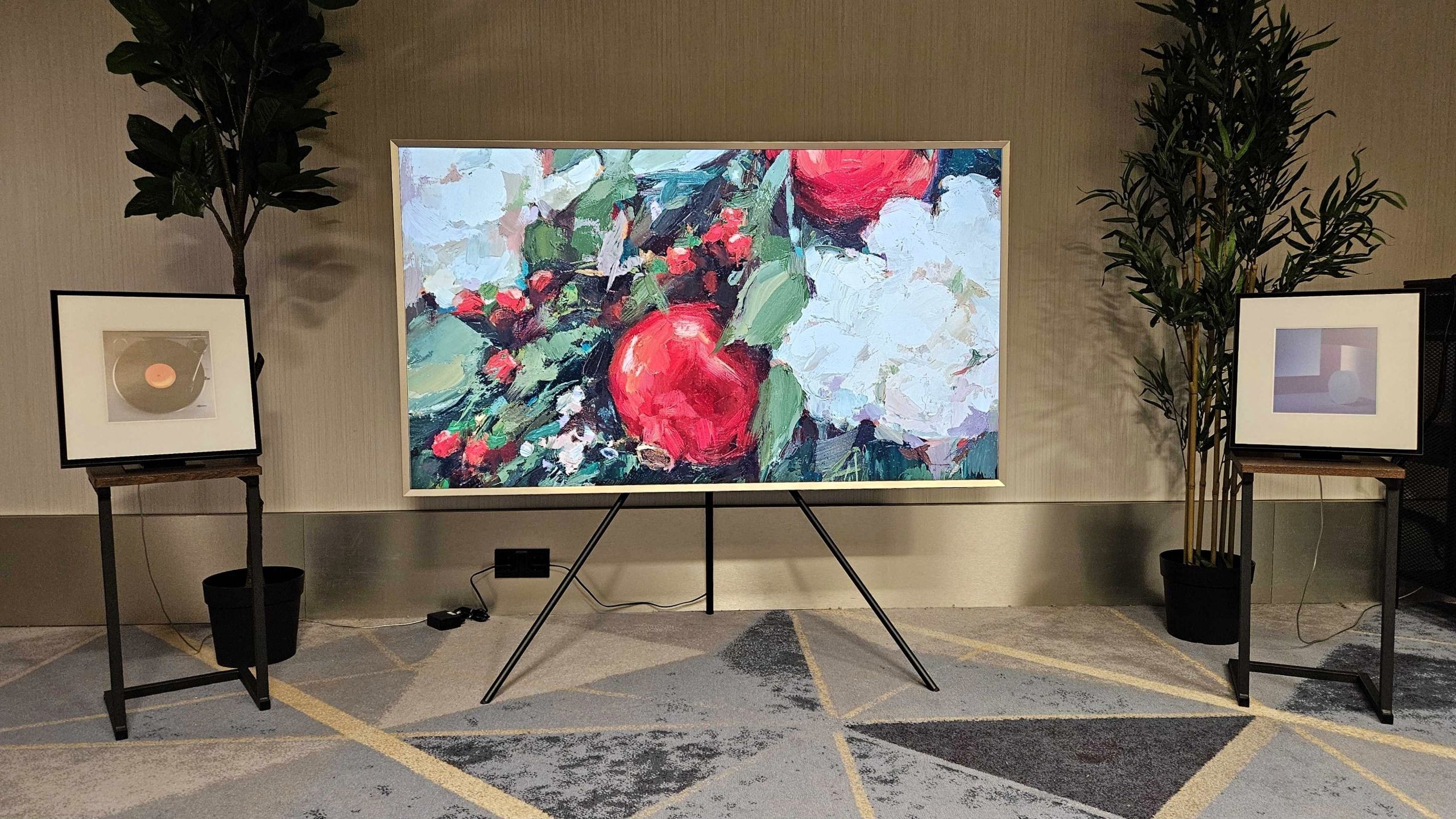
Conclusion
With The Frame Pro, Samsung’s design favourite has received a noticeable improvement where it needed it most: in the picture department. With stronger contrast and brightness than before, the Pro model is better equipped for demanding film and series viewing in all kinds of viewing conditions. The difference isn’t huge, but makes a noticeable jump from the standard version. With the addition of wireless transmission, The Frame Pro has some practical advantages that can actually make it even more interior design friendly. In that sense, we can safely say that The Frame (Pro) has come of age and deserves a recommendation.

We think
The Frame Pro has got significantly better contrast and brightness, which contributes to more vivid and natural images. Wireless video transmission is a definite plus. Despite the increased contrast, there is still more to be gained from a proper OLED or MiniLED with local dimming.
2499 €
Specifications
- Size/type: 65″ 4K Neo QLED LCD
- Resolution: 3840×2160 (4K Ultra HD)
- Panel frequency: 120/144 Hz
- Operating system: Tizen
- Inputs: 4 HDMI (4x 2.1), 2 USB 2.0, 1 USB 3.0
- Outputs: HDMI eARC
- HDR: HDR10+, HLG
- Gaming: ALLM,
- Screen sizes: 65″, 75″, 85″
- Other: Wireless One Connect Box
- Web: samsung.com
